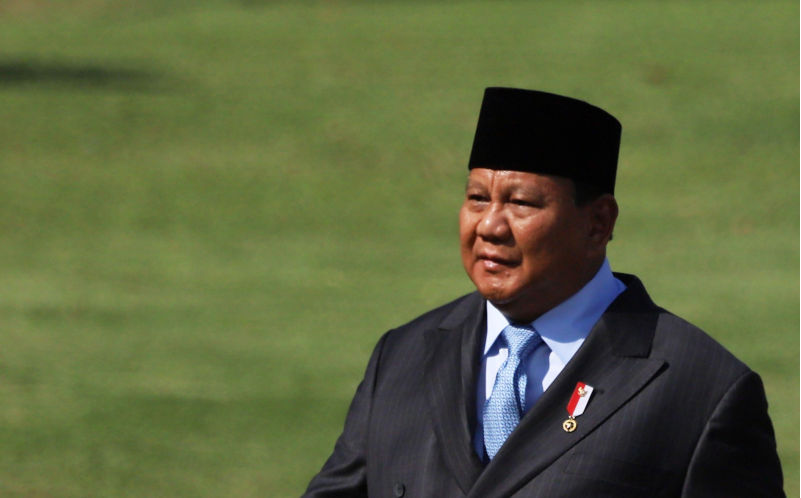Indonesia’s security depends on educating the minds behind its machines
October 25, 2025
Indonesia is investing in its regional influence — purchasing new fighters, drones, frigates and billions in defence contracts — while allowing its classrooms to deteriorate.
That strategic imbalance is not merely an issue of budget; it poses a national security threat. A focus on hard power without adequate investment in human capital will leave Jakarta with impressive arsenals and an inadequately skilled workforce, undermining the resilience that those weapons are supposed to safeguard. The evidence is clear: defence spending in the tens of billions sits alongside persistently low education budgets, poor learning outcomes compared to most peers, and millions of children whose schooling has barely achieved basic literacy or numeracy.
Since 2020, Indonesia has embarked on an unprecedented modernisation of the Tentara Nasional Indonesia, signing multi-billion-dollar deals for Rafale fighters and, more recently, a contract for 48 Turkish KAAN jets – purchases aimed at replacing ageing Cold War-era fleets and projecting credible deterrence across an archipelago of 17,000 islands. At sea, submarine and frigate programs, along with the expansion of drone fleets, aim to secure maritime approaches and safeguard trade routes that underpin the economy. Analysts estimate that Indonesia ranks among the region’s top maritime powers; one defence index places it around 13th globally by capability. These are significant ambitions that respond to real strategic pressures in the South China Sea and the broader Indo-Pacific.
However, the country’s human capital story tells a different tale. Indonesia’s latest PISA results reveal that only about 18% of 15-year-olds achieve basic proficiency in mathematics, compared to an OECD average of nearly 69%; reading skills are equally concerning. Essentially, most school leavers lack the confidence to perform the analytical and technical tasks required by modern industry. National assessments and program evaluations confirm the same trend – learning poverty persists, the pandemic has widened gaps and rural, conflict-affected and disadvantaged communities were hit hardest. Meanwhile, public spending on education remains around 3-4% of GDP – significantly below UNESCO’s often-cited 6% benchmark for meaningful quality improvements. The maths are clear: decades of defence procurement cannot replace generations of missed schooling.
This divergence has a predictable political economy. Defence purchases are visible, fast and politically salient; they produce hardware, headlines and easy narratives of sovereignty. Education gains, by contrast, compound slowly and require patient systems reform: teacher recruitment, sustained training, curricular overhaul and accountability. The result is a bias toward high-visibility hardware and away from the slower, less glamorous work of teaching. That bias has strategic consequences. A technologically literate society is the only reliable foundation for a modern defence industry, cybersecurity resilience and an economy that can absorb and sustain the capabilities a modern military demands.
Indonesia faces a need to integrate guns and schools, rather than choosing between them. Defence and education policies must support each other. The government should commit to a clear, time-limited plan to rebalance: increasing public education spending towards UNESCO’s benchmark over five years, reserving those funds for foundational learning and teacher quality and aligning defence procurement with domestic skills development plans. When the state acquires advanced aircraft, it should also invest in engineering scholarships, dual-track apprenticeships and regional technical institutes to supply the workforce for maintenance, avionics and logistics.
When naval yards are expanded, local vocational colleges must graduate welders, electricians and systems technicians trained to global standards. Linking megaprojects to local human-capital pipelines turns defence spending into an industrial strategy, rather than a purely consumptive one.
There are practical precedents and fast wins. Indonesian-Turkish defence partnerships already include co-production and technology transfer elements; expanding these into funded university-industry partnerships would build capacity and create jobs. A national Defence-Education Compact could mandate that every major defence acquisition include a parallel commitment for scholarships, local content, and training facilities, measured by transparent KPIs: the number of certified technicians trained locally, the percentage of local hires in defence supply chains, and the share of defence R&D conducted in domestic universities. Such conditionality is not isolationist – it is prudent statecraft that multiplies the payoff of every procurement dollar.
Reforming schooling itself is just as urgent. The “Merdeka Belajar” reforms appropriately move away from rote learning toward competency and critical thinking; expanding these reforms requires millions more well-trained teachers, early-grade literacy programs, mother-tongue instruction in multilingual regions and a national effort to bridge the urban-rural digital divide so e-learning does not become another source of inequality. Pilot programs that integrate vocational modules into senior secondary schooling — such as hospitality and logistics near a new airport, maritime engineering in coastal provinces — should be quickly expanded and funded through blended finance: government funding, MDB lines and defence-industry co-investment. Australia, ASEAN, the World Bank, ADB and UNESCO remain ready partners for such scalable, measurable programs.
Finally, democratic governance must anchor the entire agenda. Defence modernisation and education reform both require transparent budgeting, parliamentary scrutiny and public reporting. Procurement must be auditable and aligned with a defence white paper that sets clear capability goals; education spending must be tracked by outcomes (learning gains, teacher distribution, equity indicators), not just inputs. Civil-military balance is essential: expanding the military’s peacetime roles — from technology hubs to training centres — must not hollow out civilian institutions or erode oversight.
Indonesia’s recent hardware acquisitions are significant – they matter greatly. Equally important is the future of a generation whose schools may not prepare them for tomorrow. The policy choice is clear but solvable: integrate, invest and measure. View defence and education not as competing budgets, but as two parts of a single national strategy. If Jakarta synchronises its armouries and classrooms, it will safeguard both the archipelago’s seas and its people’s future. If it doesn’t, those jets and ships will be proud symbols of a country that cannot afford to maintain them. The nation’s long-term security ultimately depends on the minds that will operate and maintain its machinery.
The views expressed in this article may or may not reflect those of Pearls and Irritations.
